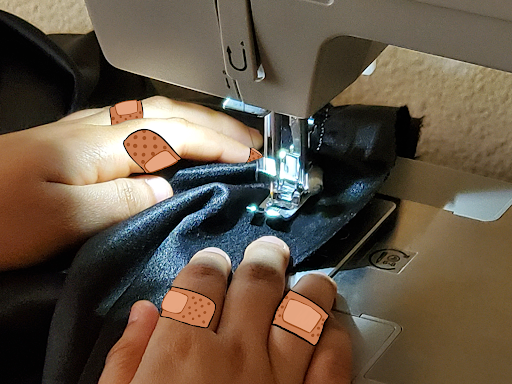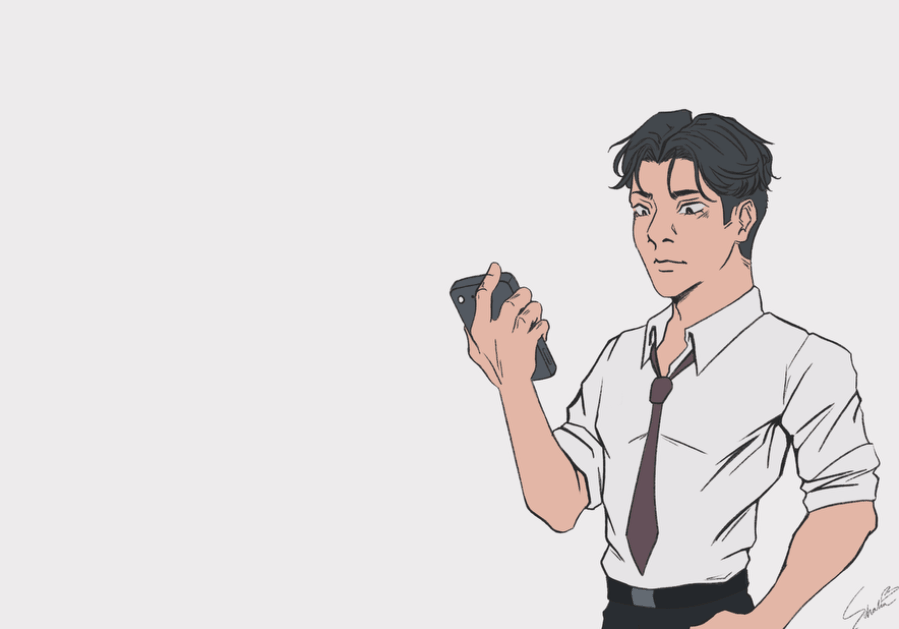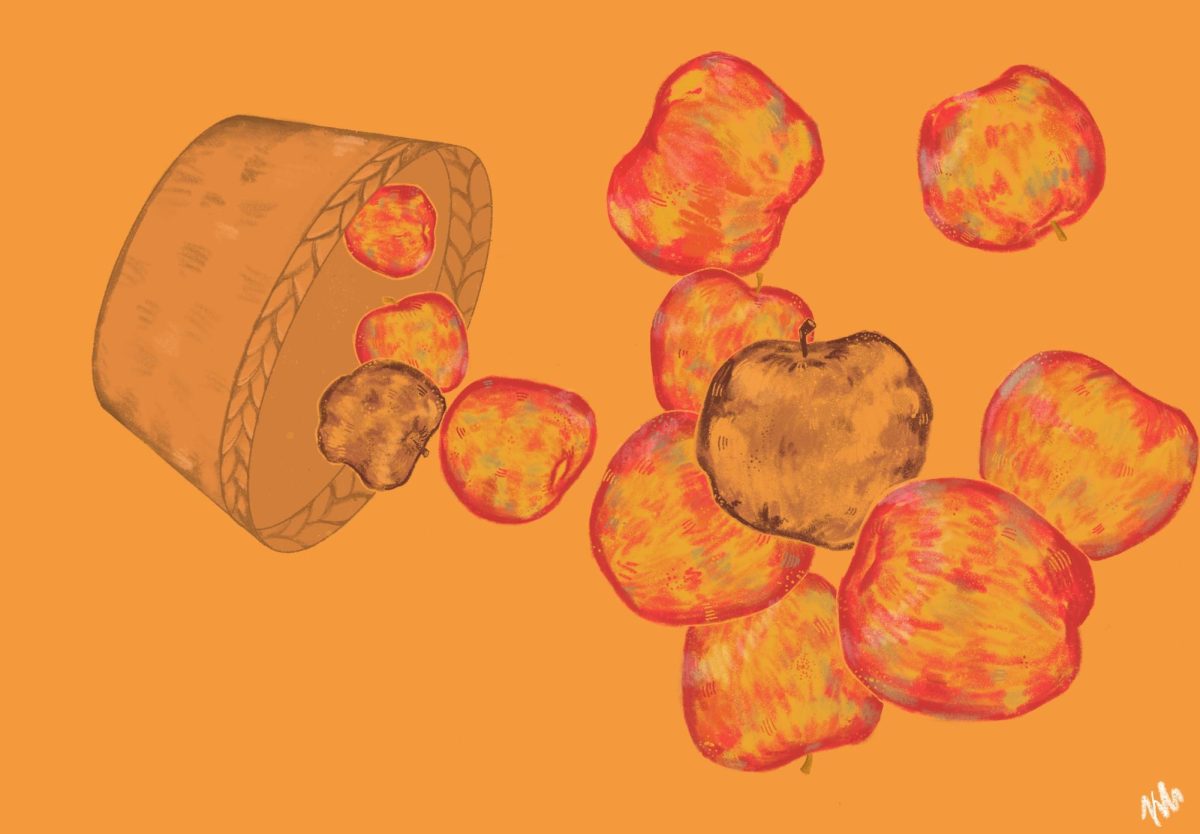
I had eagerly started sewing again after refilling the bobbin with burgundy thread. I am suddenly interrupted, however, by the needle piercing through my ill-placed finger rather than the fabric.
After getting a BAND-AID and replacing the – now bent – needle, I went straight back to work, determined to finish this project. Motivation ran through me after the close success, but ultimate failure, of my previous project, done in by a treacherous zipper.
I had been working on the current garment for the entirety of spring break. A long red dress made of four yards, or about $23 worth, of synthetic satin.
My desk was crowded with my machine and loose threads littered the floor. I found out first hand what the effects of sedentary work were, feeling stiff for days afterwards.
That day, I made a dress that was very close to being wearable. There is still a strange puff in the front where the fabric gathered incorrectly and the straps twist when you tie the back ribbon. But I still wear it around my house, proud of my hard work.
There is a certain pride in wearing something made especially for you.
Beyond learning a new skill, I found that learning how to sew has made my appreciation for garment workers grow. While I have the comfort to design and sew these clothes on my own time, within my own home and to fail without any serious financial risk, the same isn’t true for many workers at major fashion companies like Shein.
Inspections of these company’s factories have found human rights abuses. Not to mention the environmental impacts of overproduction and consumption created with this model of business.
“A lot of people wear clothing to just dress themselves, not really taking into consideration all of the hard work that actually goes into it,” said New Tech High @ Coppell junior Anisha Satish, who works in costuming in theater and runs a fashion blog. “All these third world countries work so hard to make sure that the clothing that they give out is sustainable and have ethical practices that have good material that goes into it. People who are interested in the fashion industry or sewing actually understand the hard work that goes into it, but most people don’t”
As a Pakistani girl, and Satish being Indian herself, we come from cultures with deeper historical connections to the textile and fashion industry. In general, fashion culture in South Asian countries are very different, as they still maintain the option of buying and having fabrics tailored to you, rather than the other way around.
I would not dare to throw away the salwar kameezes my aunts have sent me, but would I feel as strongly for anything I’ve bought from the mall? I find my view of most stores changed, that the $50 price tag isn’t nearly as appealing once you learn of the true difficulty and beauty of making one’s own garments.
Fashion is an integral part of culture; our clothes can transform the way we perceive and express ourselves. It is high time we acknowledge and uplift the labor behind sewing and those who make our wardrobes possible.
It’s time to acknowledge the value in every stitch.
Follow @CHSCampusNews on X.









